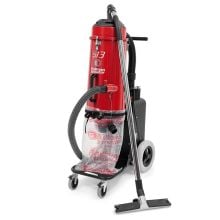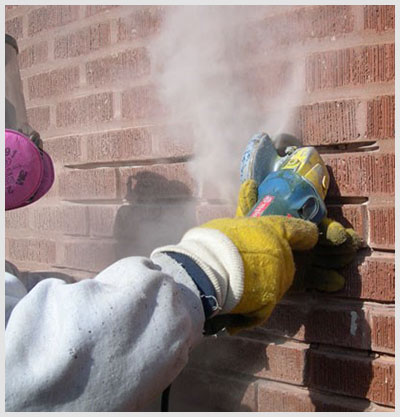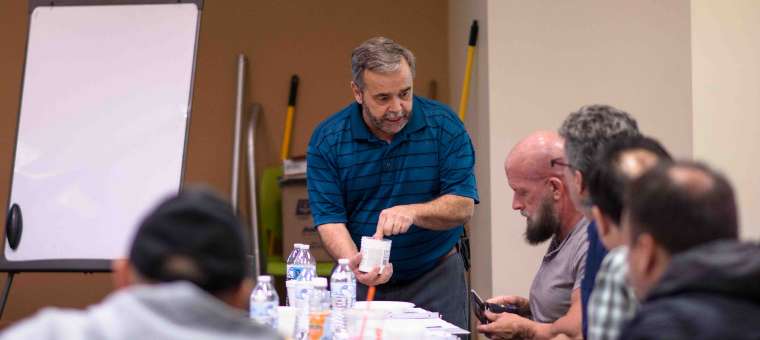OSHA-Compliant Tuckpointing
Tuckpointing: OSHA-Compliant Dust Control Methods
Tuckpointing is covered in Table 1 of the regulation. According to the standard, you do not need to measure workers’ exposure to silica if the following criteria is met:
Use a grinder equipped with a commercially available shroud and dust collection system.
Operate and maintain the tool in accordance with the manufacturer’s instructions to minimize dust emissions.
The dust collector must provide 25 cubic feet per minute (CFM) or greater or airflow per inch of wheel diameter and have a filter with 99% or greater efficiency and a cyclonic preseparator or filter-cleaning mechanism.
The following respiratory protection must be provided:
- If the shift is less than 4 hours, APF 10 respiratory protection must be provided.
- If the shift is greater than 4 hours, APF 25 respiratory protection must be provided.
Let’s Talk About Your Dust Collector...
How big does it need to be?
According to the rule above, your dust collector must provide 25 CFM for every inch of cutting blade. So if you’re using a 5-inch blade, you need a dust collector with at least 125 CFM. If you switch to a 7-inch blade, your dust collector must provide at least 175 CFM.
What about the filter?
OSHA’s new rule also requires that you use either:
- a cyclonic pre-separator, which captures dust and debris and prevents it from clogging the filter of your dust collector; or
- a dust collector with a built-in filter-cleaning mechanism. That means that you cannot take out the filter and bang it against a trashcan to get rid of a clog. Your dust collector must have an internal mechanism that does that without exposing you or your team to dust.
What else do I need to know?
Full and proper implementation of dust collection systems on handheld grinders also requires the employer to ensure that:
- The dust shroud is intact, encloses most of the grinding blade, and is installed in accordance with the manufacturers instructions
- The hose connecting the tool to the vacuum is intact and without kinks or tight bends
- The filter(s) on the vacuum are cleaned or changed in accordance with the manufacturer’s instructions
- The dust collection bags are emptied to avoid overfilling
- The blade is kept flush against the surface whenever possible
- The tool is operated against the direction of blade rotation, wherever practical

Let’s Talk About Respiratory Protection...
According to the rule above, respiratory protection must be provided on all tuckpointing jobs regardless of length. The level of respiratory protection employers are required to provide depends on the length of the shift. The higher the APF (Assigned Protection Factor), the greater the respiratory protection required.
- If the shift is less than 4 hours, APF 10 respiratory protection must be provided.
- If the shift is greater than 4 hours, APF 25 respiratory protection must be provided.
Jon-Don carries a full line of Certified and Tested HEPA Dust Extractors, as well as hoses, wands and all accessories needed to comply with Table 1 of the OSHA regulation.






